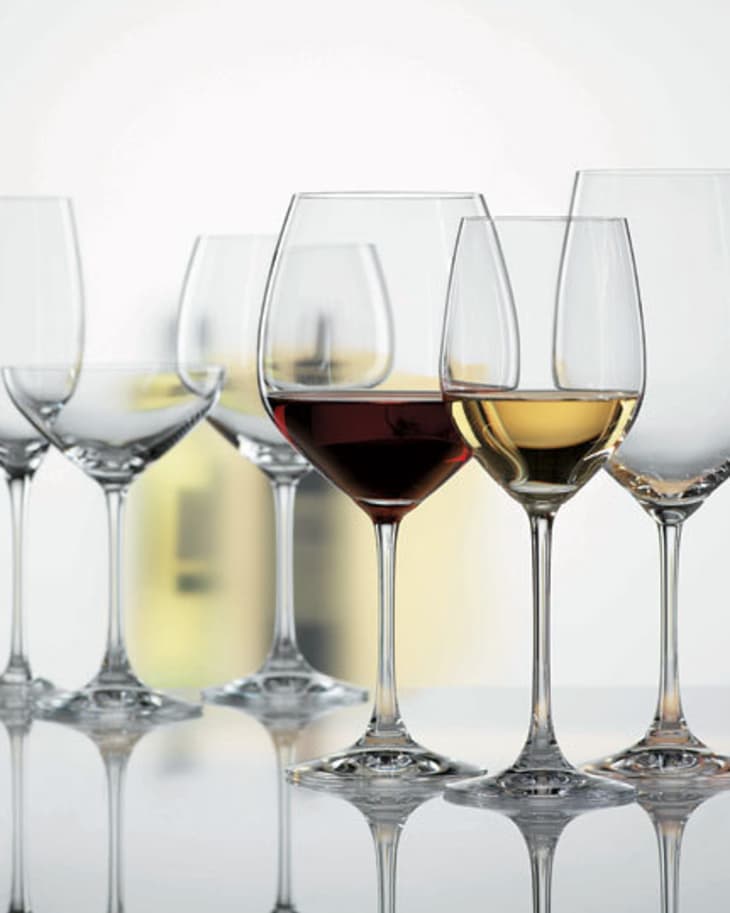Do Good Wine Glasses Really Matter? 7 Factors Affecting How a Wine Glass Works
As it is Wine Week, I thought I would revisit the topic of wine glasses. Do some wine glasses enhance the wine better than others? Would you invest in expensive wine glasses? Are all ‘good’ wine glasses expensive?
In my opinion, yes, the ‘glass’ makes a difference. Try it for yourself. Pour the same wine into two different glasses and taste the difference.
In a previous post, back in 2009, I outlined some of the attributes of a wine glass that may or may not contribute to the tasting experience.
• 1. The size and shape of the bowl – The larger the bowl the better the wine’s aromas can circulate and manifest themselves. Glassware intended for red wine tends to be bigger, since red wines need more time and air to open up. Beyond this, anything regarding the bowl shape and size is a personal consideration.
• 2. The stem length – The stem of the glass allows us to hold the glass without having our hand on the actual bowl and ‘interfere’ with the wine’s temperature. No more, no less. Stem length is a personal as well as practical consideration. Longer stems look elegant, but break more easily and are more difficult to load in a dishwasher, and to store. Shorter stems are more practical, especially for everyday use.
• 3. Stemless – Stemless wine glasses have become very popular. This is a good thing, as they are practical, especially for everyday and casual wine-drinking occasions. I am a total convert.
• 4. Fine lead crystal or regular glass – The finer the crystal the thinner the glass. This does make a huge difference. Fine, lead crystal really does enhance the wine drinking experience. However, these are expensive glasses. Today, thanks to modern technology, we can find lots of non-lead but fine crystal glasses
• 5. Plain, colored or etched – In general plain, unadorned glasses are better for serious tasting, as they allow you to examine all the visual aspects of the wine such as the color — its intensity as well as viscosity. However, most wine drinking situations are not ‘serious tastings’ so feel free to have some fun, add some color – whatever you prefer.
• 6. Champagne/sparkling wine flutes – The ‘flute’ shaped glass has long been considered the best for Champagne and sparkling wines as it allows the wine to manifest its bubbles with greatest intensity and duration. However, if you really want to savor the aromas and flavors I recommend using regular white wine glasses, which have a wider bowl and mouth, which enables the wine to better open up. Your bubbles may seem to dissipate more quickly, but you will still taste their sensation in your mouth. According to Wine Enthusiast, a leading supplier of wine glasses and accessories, the traditional ‘coupe’ is making a big come-back for Champagne and all things sparkling.
• 7. The occasion matters – Another factor that is also important is the occasion. Do you need the glasses for a large gathering? For an outdoor event or picnic? Maybe you are worried about breakage, but don’t want cheap plastic. Read on there are options.
Look for a roundup of some of my favorite wine glasses and brands a little later this week.
Enjoy Wine Week at The Kitchn!
Mary Gorman-McAdams, MW (Master of Wine), is a New York based wine educator, freelance writer and consultant.
Related: Are Stemmed Wine Glasses Necessary?
(Image: Spiegelau Grandissimo series)
